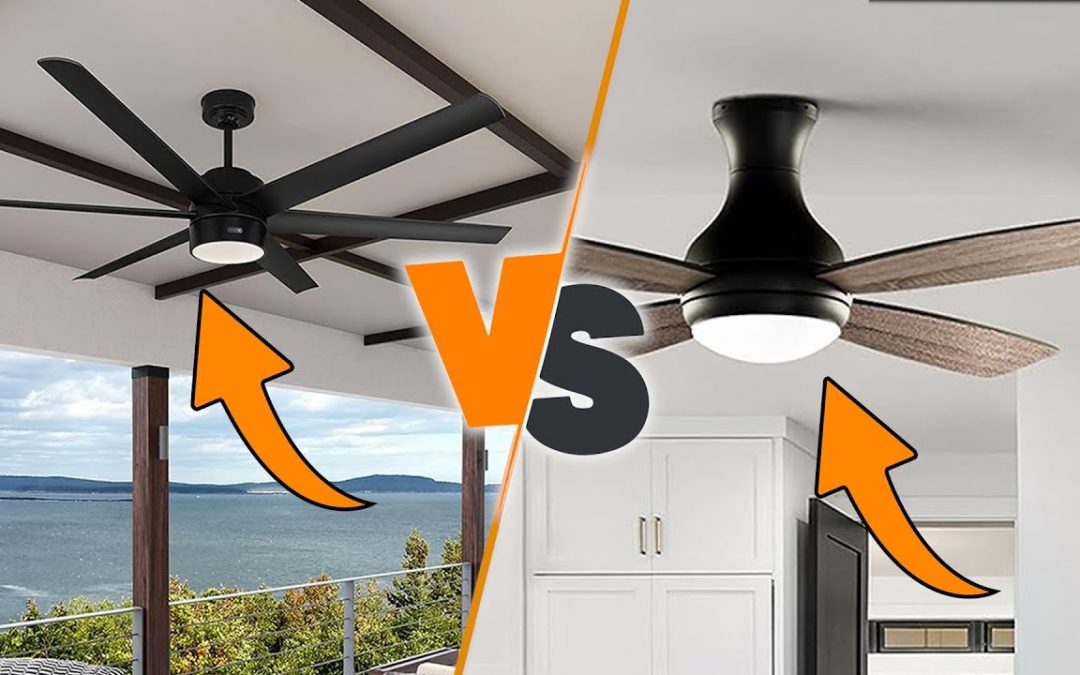Operation of AC Fans in Air Conditioning Systems:
Alternating current powers AC (Alternating Current) fans in air conditioning systems. The electrical supply in these systems, which typically cycles at a speed of 50 or 60 cycles per second, provides power to the AC fan motor. A steady and uniform airflow is produced by the fan blades spinning at a constant pace due to the alternating current. AC fans are normally present in both the indoor and outdoor components of an air conditioning system:
- Indoor Unit: Here, air is blasted over the evaporator coils by the AC fan. Before the air is returned to the room, the heat from the interior air is absorbed by the evaporator coils and cooled. Effective heat exchange and reliable cooling are guaranteed by the AC fan’s steady and continuous airflow.
- Outdoor Unit: The outer air conditioning fan facilitates the removal of heat from the condenser coils that is absorbed by the refrigerant. The fan helps release heat into the surrounding air by forcing air across the heated coils, which is essential to preserving the cooling process’s effectiveness.
For efficient cooling and the maintenance of a consistent interior temperature, dependable and predictable airflow is facilitated by the constant speed functioning of AC fans.
Advantages of AC Fans in Air Conditioning Systems:
1. Stable Airflow:
AC fans offer steady, reliable airflow, which is essential for air conditioning systems’ efficient cooling and temperature management. By distributing the cooled air evenly around the room, the consistent circulation contributes to preserving a comfortable temperature and avoiding hot spots.
2. Cost-Effectiveness:
In general, AC fans are less expensive than DC (Direct Current) fans. Their reduced initial cost makes them a desirable choice for many air conditioning systems, particularly in installations where budget is limited. Because of their simple design, they are frequently less expensive to maintain overall, which benefits the system as a whole.
3. Effective Heat Dissipation:
To remove heat from the condenser coils in an air conditioner, AC fans are a necessary component of the outside unit. Effective heat exchange with the external environment is facilitated by the fan, which blows air across the heated coils. Maintaining the system’s cooling efficiency and avoiding overheating depend heavily on this efficient heat dissipation.
Operation of DC Fans in Air Conditioning Systems:
Direct current, or steady, unidirectional electrical flow, is what drives DC (Direct Current) fans. DC fans have a motor that controls the speed and direction of the fan blades using an electronic control and a permanent magnet. Airflow can be adjusted and speed can be changed thanks to this design. DC fans are used in the indoor and outdoor units of air conditioning systems to provide more performance control:
- Indoor Unit: Like AC fans, the DC fan circulates air over the evaporator coils. On the other hand, the DC fan’s speed adjustment feature enables more accurate airflow management, which is advantageous for adjusting to changing cooling requirements and maximizing comfort.
- Outside Unit: The DC fan in the outdoor unit helps remove heat from the condenser coils. The DC fan’s variable speed capabilities help enhance heat dissipation efficiency by allowing the fan speed to be modified in response to ambient temperature and cooling requirements.
DC fans’ variable speed operation offers air conditioning systems increased efficiency and flexibility, enabling more customized performance.
Advantages of DC Fans in Air Conditioning Systems:
1. Energy Efficiency:
DC fans have a 50% lower power consumption than AC fans, making them extremely energy-efficient. This large power consumption drop results in lower energy costs and a smaller environmental impact. The energy efficiency of DC fans in air conditioning systems enhances overall system performance and reduces costs.
2. Variable Speed Control:
The ability of DC fans to provide exact control over speed and airflow is one of their main features. The air conditioning system can adjust to varying cooling demands thanks to this variable speed control, which improves comfort and maximizes energy efficiency. To further increase efficiency, the fan can run at lower speeds when there is less demand for cooling.
3. Diminished Noise:
In general, DC fans generate less noise in comparison to AC fans. Quieter operation is made possible by the fan speed adjustment feature, which can be very advantageous in settings where noise levels are an issue. A more comfortable interior atmosphere is enhanced by DC fans’ quieter operation.
FAQs:
· Can I Replace an AC Fan with a DC Fan in My Existing Air Conditioner?
It’s not easy to switch out an AC fan with a DC fan in an existing air conditioner; normally, major adjustments are needed. Making sure your conversion from one type of fan to another is compatible with the controls and components already present in the equipment is important because AC and DC fans have distinct motor types and electrical needs.
· Are There Any Additional Costs Associated with DC Fans?
Actually, because of their superior efficiency and cutting-edge technology, DC fans can cost more than AC fans. A DC fan may cost more to buy and install initially, but over time, the energy savings and lower running costs will make up for this difference. Furthermore, DC fans frequently have improved features like improved speed control and quieter operation, which might be worth more than just energy savings.
· How Can I Tell Whether the Fan in My Air Conditioner Is AC or DC?
You can look up the characteristics of your air conditioner online or in the user manual to find out if it has an AC or DC fan. Usually, the fan motor type is mentioned in the technical specs section. As an alternative, get in touch with the manufacturer or seek advice from an HVAC specialist who can examine your equipment and offer comprehensive details.


